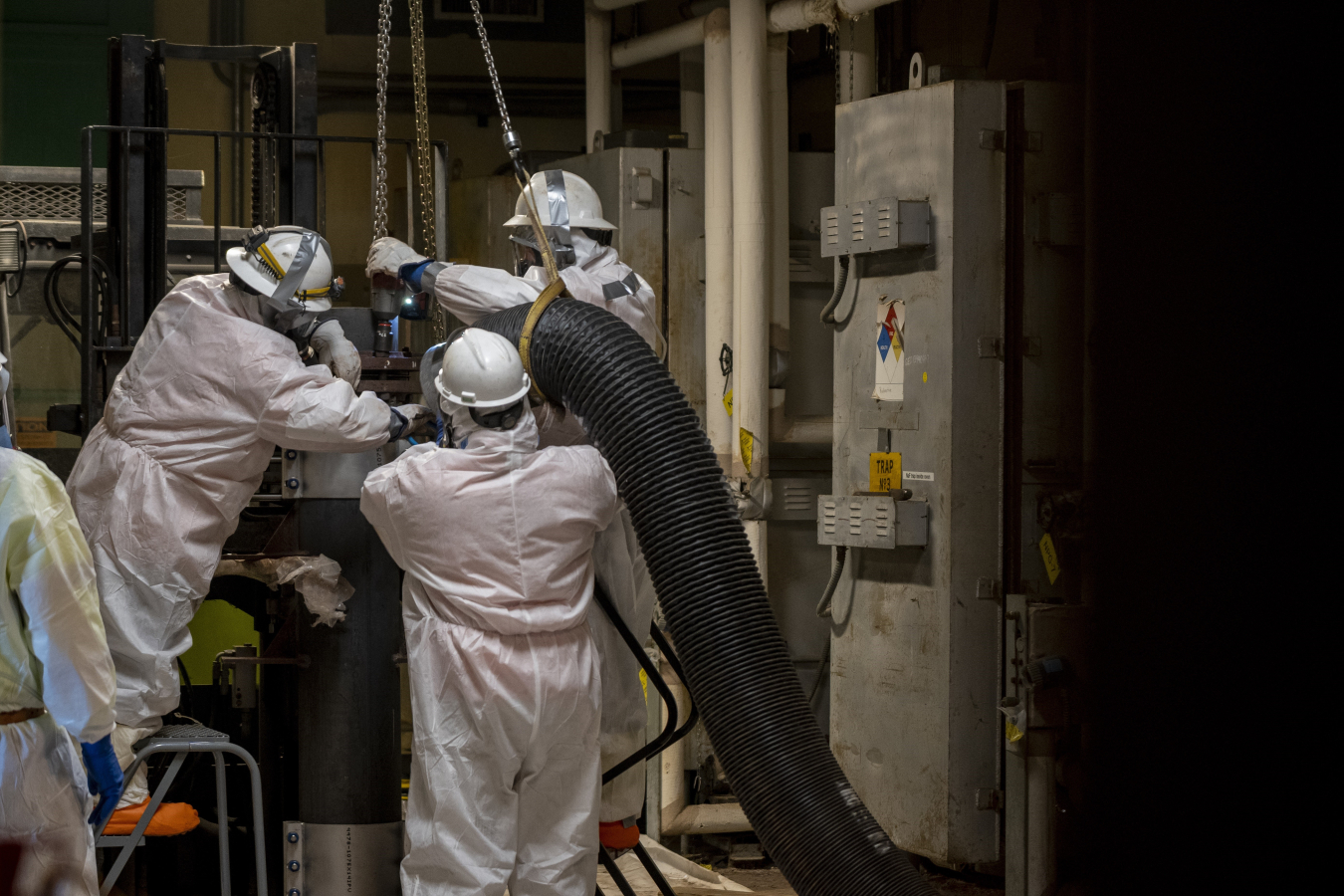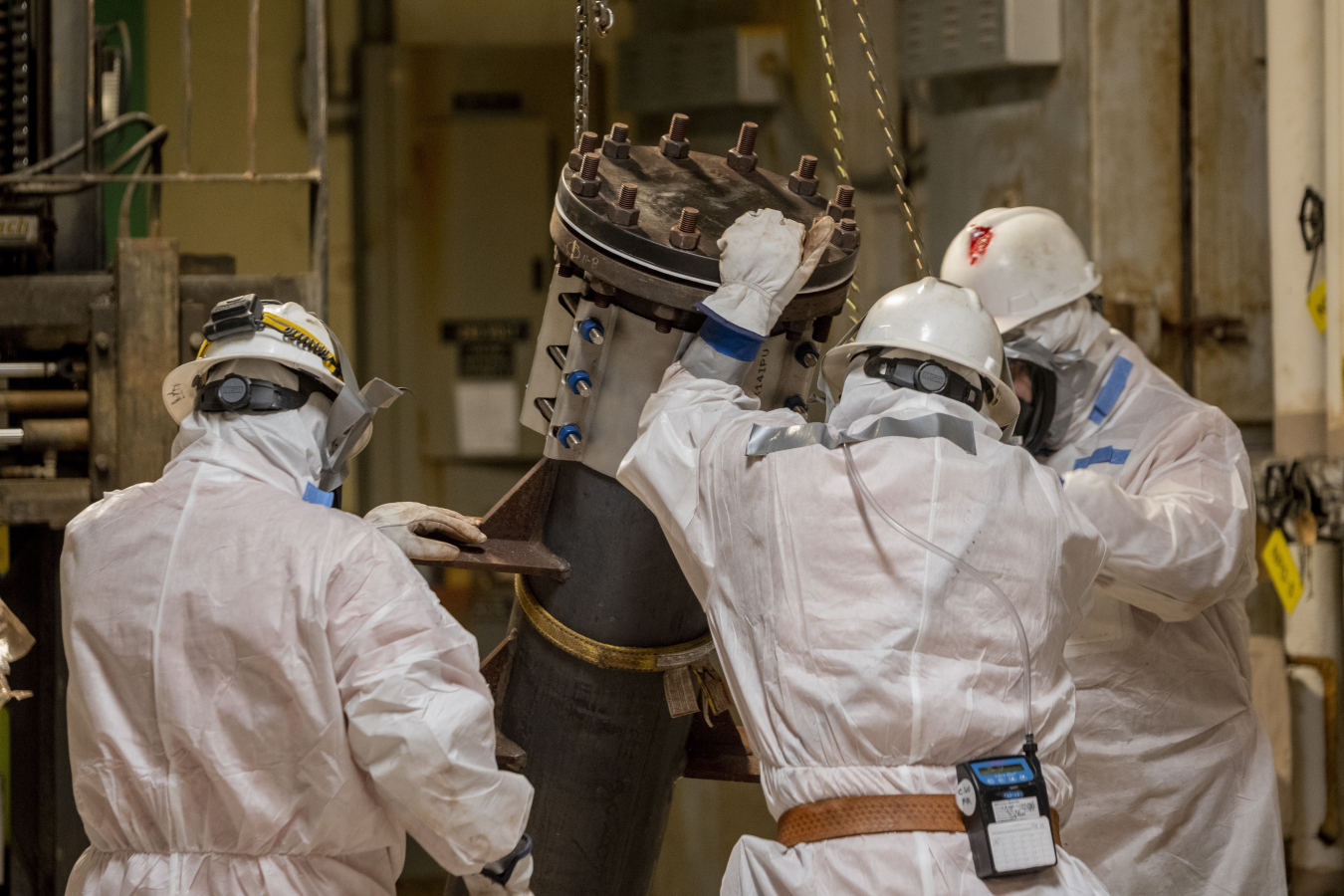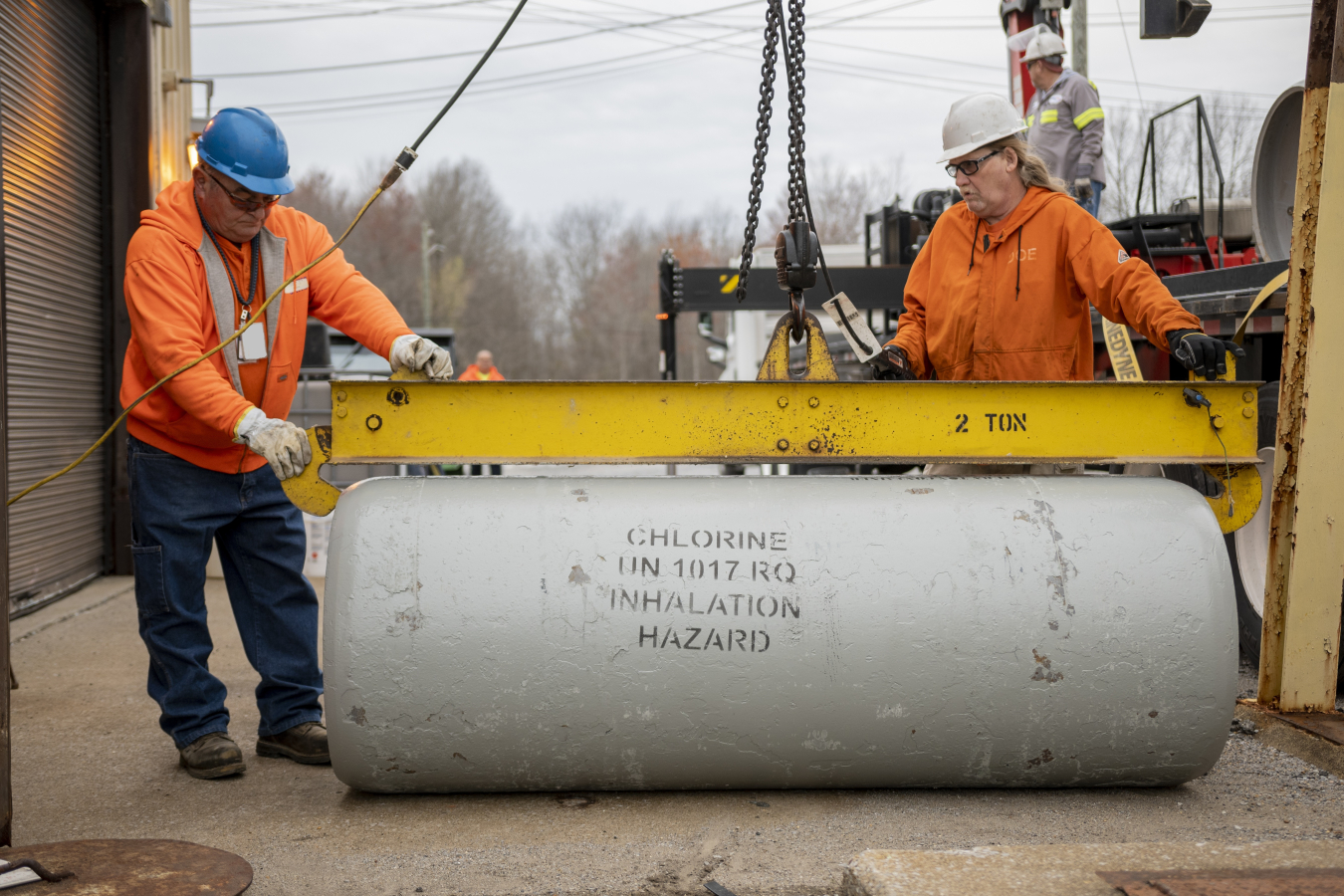EM workers continue to reduce chemical hazards at the Paducah Site with the recent shipment of 14 sodium fluoride traps, or exchange vessels, for off-site disposal and the elimination of the site’s entire chlorine gas cylinder inventory.
Office of Environmental Management
June 27, 2023
PADUCAH, Ky. – EM workers continue to reduce chemical hazards at the Paducah Site with the recent shipment of 14 sodium fluoride traps, or exchange vessels, for off-site disposal and the elimination of the site’s entire chlorine gas cylinder inventory.
Removing these hazards reduces their environmental impact and risks to workers and the community. Hazard reduction is one of EM’s key objectives to achieve over the next decade for Paducah.
“Removing the sodium fluoride traps from the site reduced the risk of a chemical release in the C-310 Product Withdrawal facility, a building that previously supported the uranium enrichment process,” Portsmouth/Paducah Project Office Manager Joel Bradburne said.


To prepare the sodium fluoride traps for off-site shipment, workers for Four Rivers Nuclear Partnership (FRNP), EM’s Paducah Site deactivation and remediation contractor, used robust, insulated ovens to heat the uranium hexafluoride contained in the traps so it could be compliantly transferred to storage vessels. The uranium hexafluoride removed from the traps will be sampled and tested to determine if the material can be repurposed for future use.
“To remove the sodium fluoride traps, our team had to utilize complex equipment that had not been used for nearly a decade. That presented challenges that I’m proud to say our team successfully overcame,” FRNP Program Manager Myrna Redfield said.
Paducah eliminated its chlorine gas inventory after FRNP’s recent conversion of the site’s water and sewage treatment plants’ disinfection systems from chlorine gas to sodium hypochlorite, commonly known as household bleach. This allowed the Paducah Site to be removed from state and federal high hazard chemical registers.
“Because sodium hypochlorite poses fewer hazards to workers and the environment, this transition and the removal of the chlorine gas cylinders greatly reduces the amount of surveillance and maintenance activities associated with these systems, which will result in future cost savings,” Bradburne said. “These are opportunities we are looking for as we continue to make progress in our cleanup mission.”
To receive the latest news and updates about the Office of Environmental Management, submit your e-mail address.

